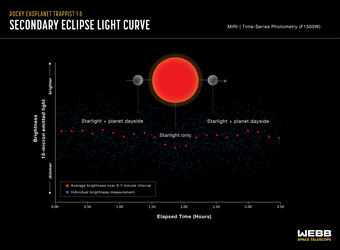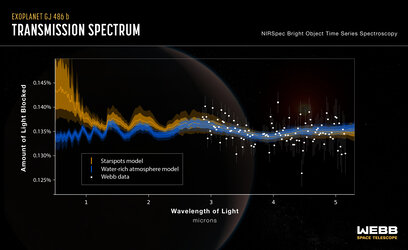Accept all cookies Accept only essential cookies See our Cookie Notice

About ESA
The European Space Agency (ESA) is Europe’s gateway to space. Its mission is to shape the development of Europe’s space capability and ensure that investment in space continues to deliver benefits to the citizens of Europe and the world.
Highlights
ESA - United space in Europe
This is ESA ESA facts Member States & Cooperating States Funding Director General Top management For Member State Delegations European vision European Space Policy ESA & EU Space Councils Responsibility & Sustainability Annual Report Calendar of meetings Corporate newsEstablishments & sites
ESA Headquarters ESA ESTEC ESA ESOC ESA ESRIN ESA EAC ESA ESAC Europe's Spaceport ESA ESEC ESA ECSAT Brussels Office Washington OfficeWorking with ESA
Business with ESA ESA Commercialisation Gateway Law at ESA Careers Cyber resilience at ESA IT at ESA Newsroom Partnerships Merchandising Licence Education Open Space Innovation Platform Integrity and Reporting Administrative Tribunal Health and SafetyMore about ESA
History ESA Historical Archives Exhibitions Publications Art & Culture ESA Merchandise Kids Diversity ESA Brand Centre ESA ChampionsLatest
Space in Member States
Find out more about space activities in our 23 Member States, and understand how ESA works together with their national agencies, institutions and organisations.
Science & Exploration
Exploring our Solar System and unlocking the secrets of the Universe
Go to topicAstronauts
Missions
Juice Euclid Webb Solar Orbiter BepiColombo Gaia ExoMars Cheops Exoplanet missions More missionsActivities
International Space Station Orion service module Gateway Concordia Caves & Pangaea BenefitsLatest
Space Safety
Protecting life and infrastructure on Earth and in orbit
Go to topicAsteroids
Asteroids and Planetary Defence Asteroid danger explained Flyeye telescope: asteroid detection Hera mission: asteroid deflection Near-Earth Object Coordination CentreSpace junk
About space debris Space debris by the numbers Space Environment Report In space refuelling, refurbishing and removingSafety from space
Clean Space ecodesign Zero Debris Technologies Space for Earth Supporting Sustainable DevelopmentApplications
Using space to benefit citizens and meet future challenges on Earth
Go to topicObserving the Earth
Observing the Earth Future EO Copernicus Meteorology Space for our climate Satellite missionsCommercialisation
ESA Commercialisation Gateway Open Space Innovation Platform Business Incubation ESA Space SolutionsLatest
Enabling & Support
Making space accessible and developing the technologies for the future
Go to topicBuilding missions
Space Engineering and Technology Test centre Laboratories Concurrent Design Facility Preparing for the future Shaping the Future Discovery and Preparation Advanced Concepts TeamSpace transportation
Space Transportation Ariane Vega Space Rider Future space transportation Boost! Europe's Spaceport Launches from Europe's Spaceport from 2012Latest

Rocky exoplanet TRAPPIST-1 b (illustration)
Thank you for liking
You have already liked this page, you can only like it once!
Illustration showing what the hot rocky exoplanet TRAPPIST-1 b could look like. TRAPPIST-1 b, the innermost of seven known planets in the TRAPPIST-1 system, orbits its star at a distance of 0.011 AU, completing one circuit in just 1.51 Earth-days. TRAPPIST-1 b is slightly larger than Earth, but has around the same density, which indicates that it must have a rocky composition. Webb’s measurement of mid-infrared light given off by TRAPPIST-1 b suggests that the planet does not have any substantial atmosphere. The star, TRAPPIST-1, is an ultracool red dwarf (M dwarf) with a temperature of only 2566 K and a mass just 0.09 times the mass of the Sun.
This illustration is based on new data gathered by Webb’s Mid-Infrared Instrument (MIRI) as well as previous observations from other ground- and space-based telescopes. Webb has not captured any images of the planet.
MIRI was developed as a partnership between Europe and the USA: the main partners are ESA, a consortium of nationally funded European institutes, the Jet Propulsion Laboratory (JPL) and the University of Arizona. The instrument was nationally funded by the European Consortium under the auspices of the European Space Agency.
[Image description: Illustration of a rocky planet and its red dwarf star on an empty black background. The planet is large, in the foreground on the lower right and the star is smaller, in the background at the upper left. The planet is various shades of grey, with some small craters. There is no apparent atmosphere. The left quarter of the planet (the side facing the star) is lit, while the rest is in shadow.]
-
CREDIT
NASA, ESA, CSA, J. Olmsted (STScI), T. P. Greene (NASA Ames), T. Bell (BAERI), E. Ducrot (CEA), P. Lagage (CEA) -
LICENCE
CC BY 4.0 INT or ESA Standard Licence
(content can be used under either licence)

Rocky exoplanet TRAPPIST-1 b (temperature comparison)

Rocky exoplanet TRAPPIST-1 b (secondary eclipse light curve)

Webb finds water vapour, but from a rocky planet or…

Cheops science: What are exoplanets made of?















 Germany
Germany
 Austria
Austria
 Belgium
Belgium
 Denmark
Denmark
 Spain
Spain
 Estonia
Estonia
 Finland
Finland
 France
France
 Greece
Greece
 Hungary
Hungary
 Ireland
Ireland
 Italy
Italy
 Luxembourg
Luxembourg
 Norway
Norway
 The Netherlands
The Netherlands
 Poland
Poland
 Portugal
Portugal
 Czechia
Czechia
 Romania
Romania
 United Kingdom
United Kingdom
 Slovenia
Slovenia
 Sweden
Sweden
 Switzerland
Switzerland

























